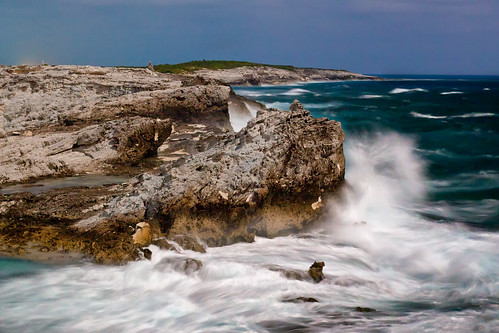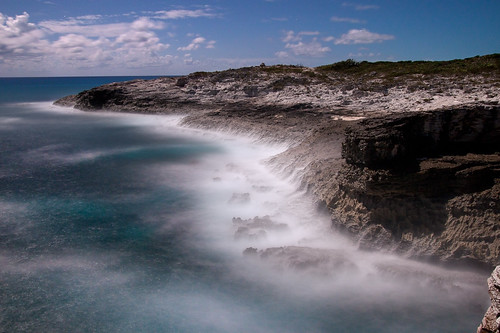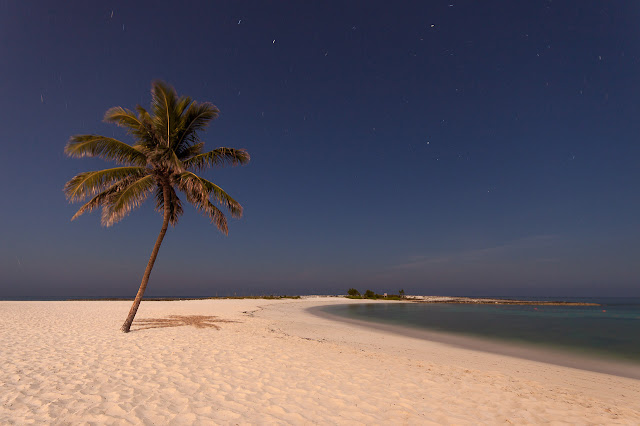|
Full Moon Seascapes
I was lucky to have been in the Bahamas recently, and as luck would have it, the trip coincided with the rise of the supermoon in May. Unfortunately we weren't in a location where we could witness the moon actually rise. I snagged a few shots about an hour after it came up, but since I couldn't see it come up over the horizon the next best thing was to wait till late at night. A full moon is awesome light and gives a distinct, unique illumination to the world under long exposures.
Whether it's locally along the Chesapeake Bay or in the tropics, I love shooting under the light of the full moon. Coincidentally, when I was in the Bahamas in November it was also during a full moon and I learned first hand what full moon seascapes are like. The full moon can create very unique lighting conditions. The shooting times are much shorter than you might think, especially with a fast lens. With a fast 50mm (like an f/1.4) and a bump in ISO, you can even shoot sub 1-second shots and brighten them in post enough to see the scene well. The two shots below are ones I took last November. Of course, with a lower ISO and higher aperture, it's still easy to push exposures from 30 seconds to several minutes and get unique scenes captured.
In November I was in the Exumas, a much darker area of the country than the city of Nassau (which is where I was last week). The three shots above are from Staniel Cay in the Exumas, a good 130 km southeast from Nassau. In Nassau the lights of the resort were flooding the sky and the beach so I went out to the edge of the coral rocks, as far away as I could. I couldn't get very far, but it was far enough. The only problem I had was picking up the slight yellow glow from artificial lights, which competed slightly with the full moon. I had to reduce the yellow tint a little bit in post processing but otherwise the colors came out true.
When I went out in May I started with the lone palm tree at the edge of the resort beach (the shot above and at left). Tried two angles, one facing away from the moon, one facing into the moon to bring it into a slight silhouette. Totally different effect, but both relatively short exposures given it was around 1am. Next I wandered down to the small, exposed area of coral rock beyond the edge of the sand. I didn't have a flashlight with me, but luckily the supermoon was more than enough to navigate by. The rocks are very sharp and dangerous, and you definitely don't want to fall on them (see the jagged surfaces in the shot below). The ocean was eerily calm too, so much so that I was able to get down to within a few feet of the edge and not get wet. The waves were very gentle and produced a small amount of sea foam at the edge of the rocks. I setup right where the gentle waves were crashing and the water was flowing between the crevasses and holes in the ledge. I didn't last long though as I had visions of a larger wave suddenly rolling in out of the dark, crashing over the rocks and knocking me over (or worse, damaging my equipment!). In all seriousness, I did keep a very close eye and ear on the sea. An environment like this at night is nothing to fool around with. I remained diligent in watching and listening for even the slightest difference in the swell/wave/crash pattern. I think I spent around 30 minutes on the rocks and figured I was ahead of the game since I hadn't gotten wet yet or dropped anything valuable. Grabbed my tripod, threw my bag over my shoulder, and headed back up to my room to get some shut-eye.
Besides silver bullets to defend against werewolves, what other tips and techniques have you used when shooting under the light of the full moon? Comments
There are no comments on this post. Be the first one to comment using the form below.
Add Comment
|
Topic List
adventures
business
calendar
copyright
digital editing
equipment
event
facebook
free
google
internet
lightroom
microsoft
opinion
philosophy
photoclub
photography
photoshop
poetry
presentation
promotion
software
technique
technology
Search
Posts By Date
Recent Posts
Latest Photos
|
















